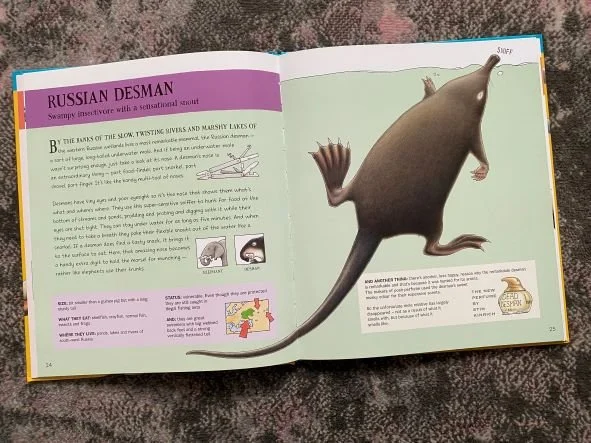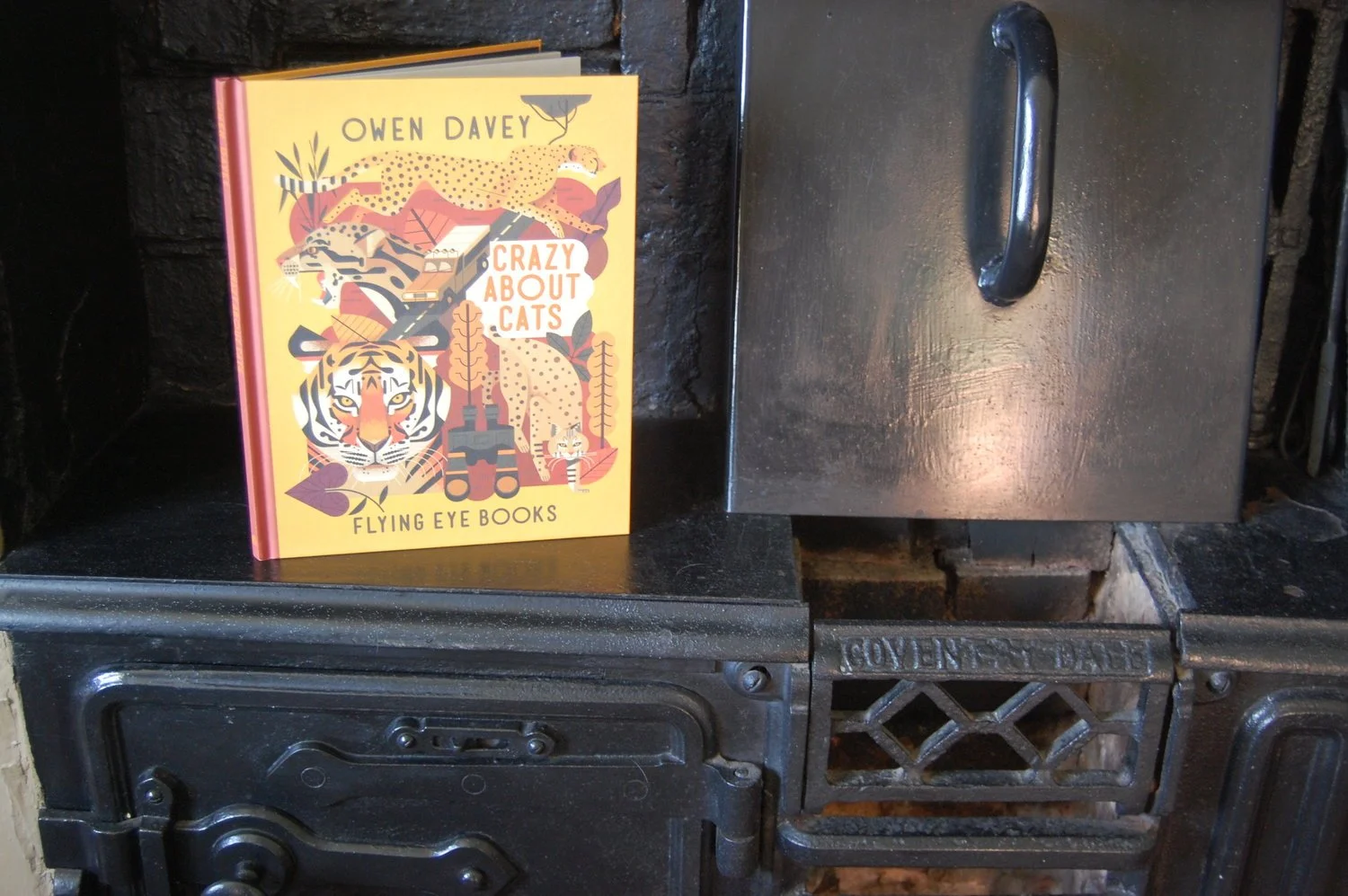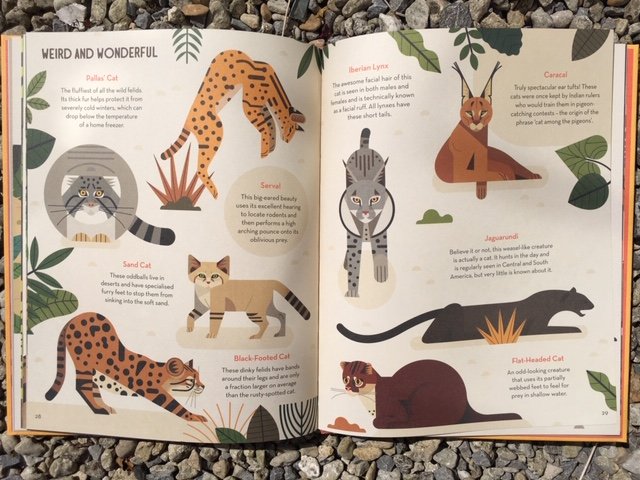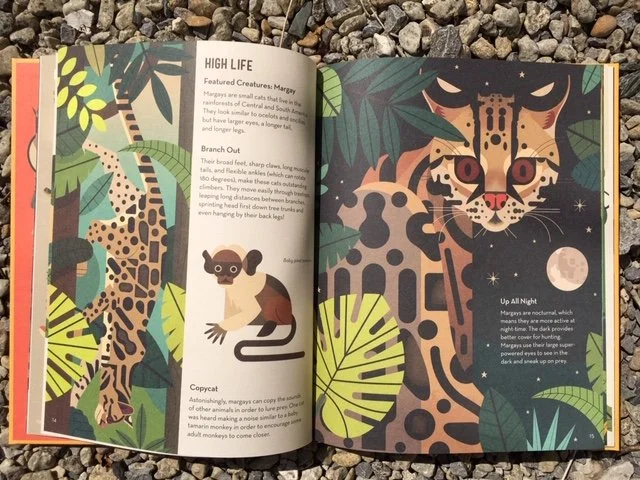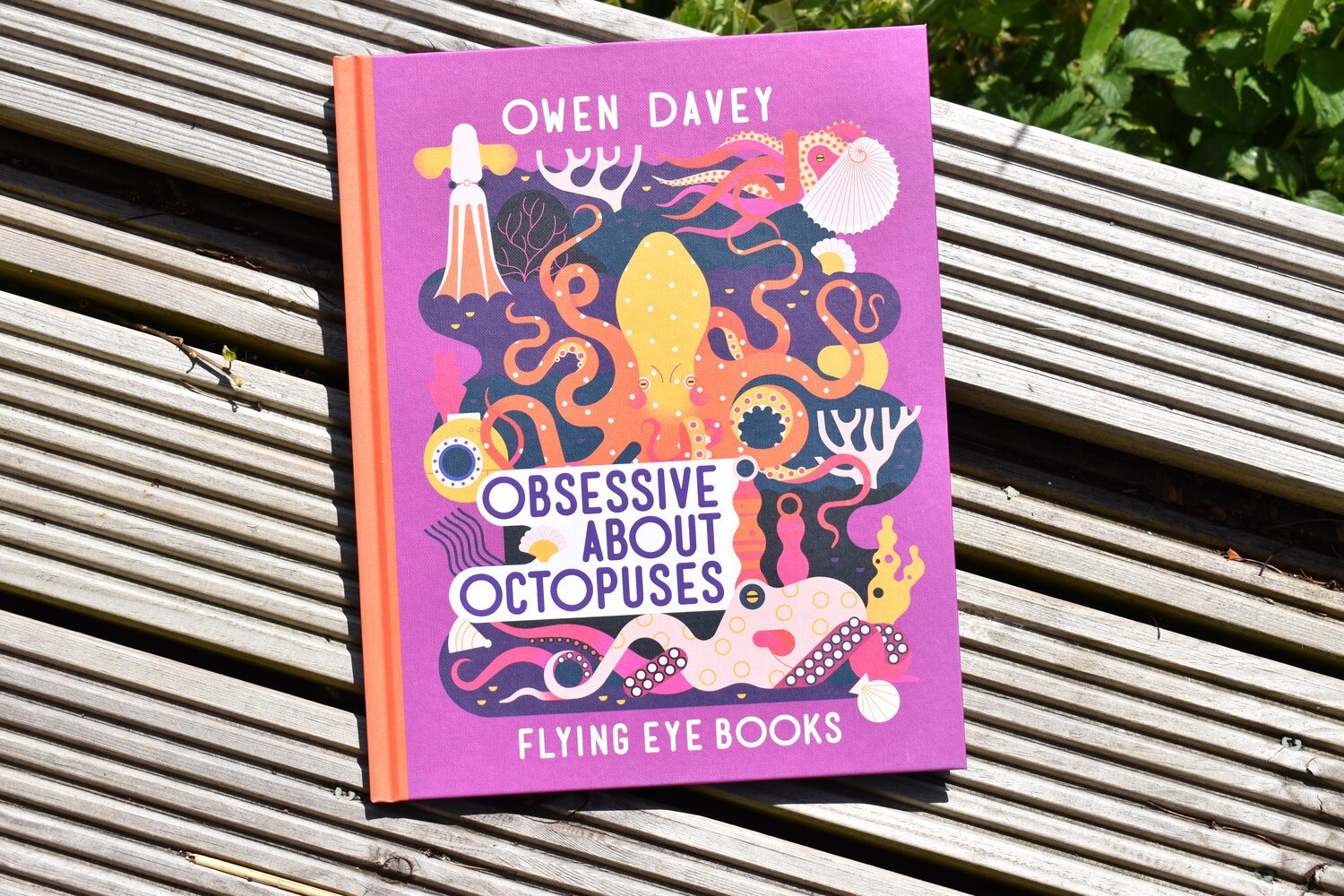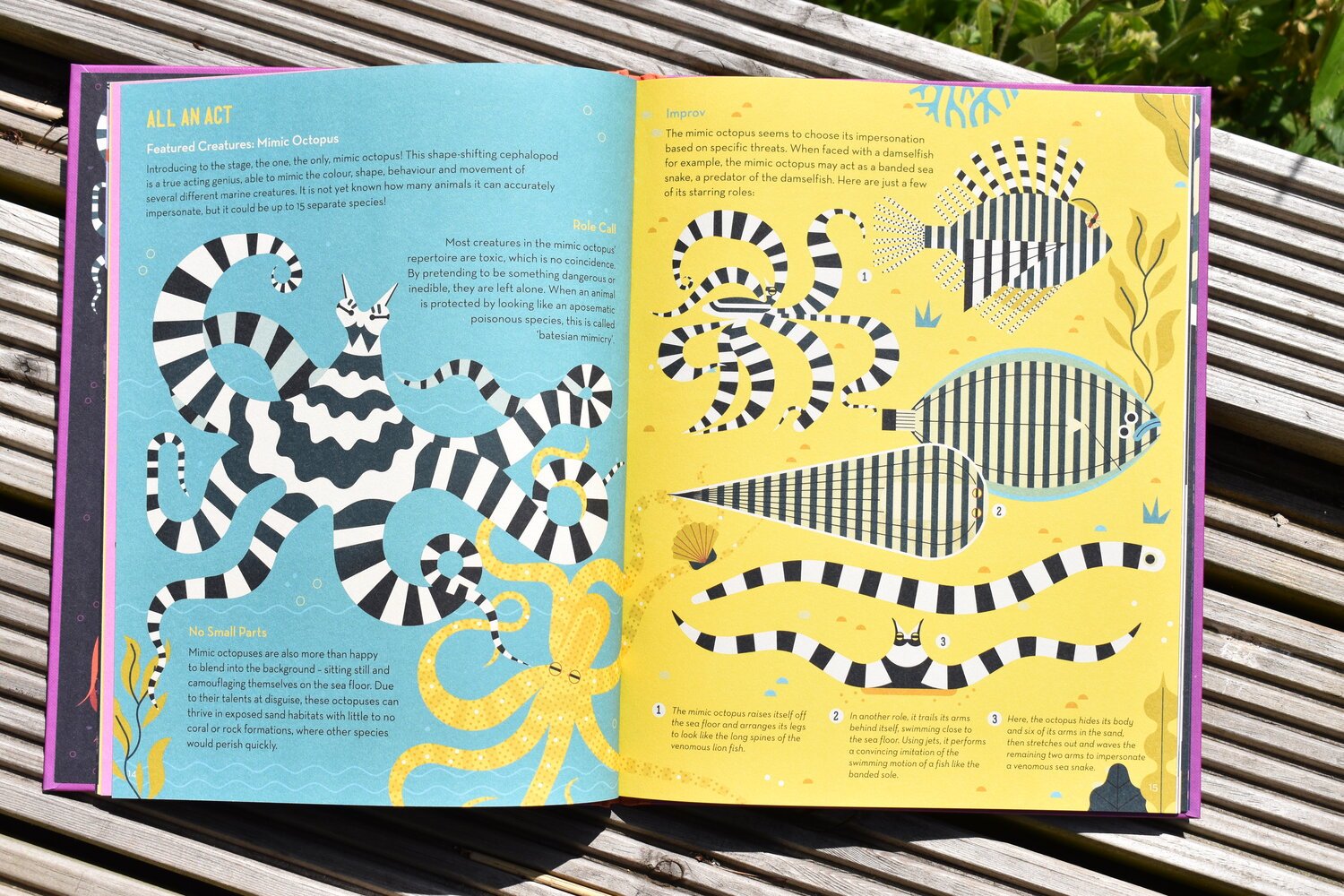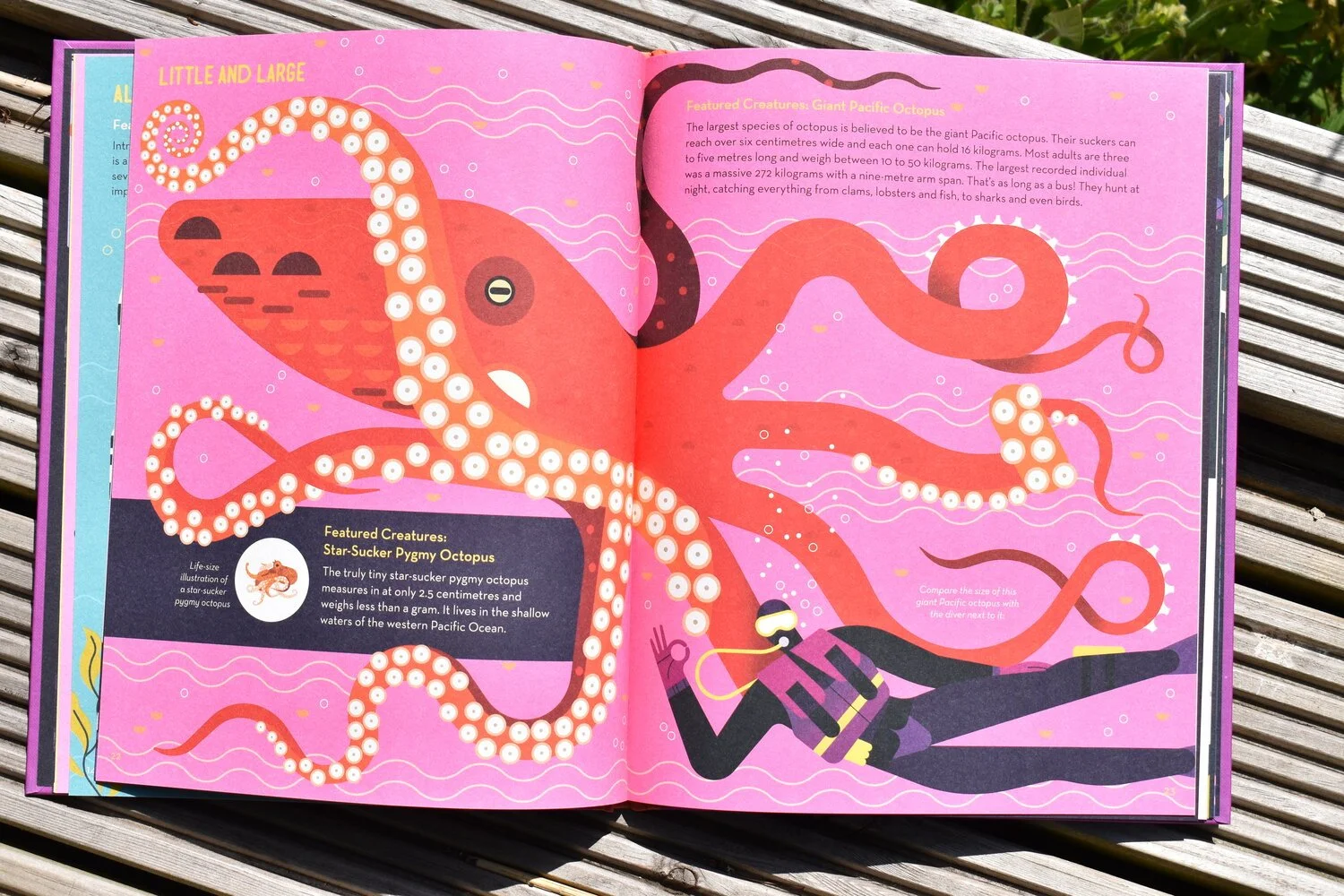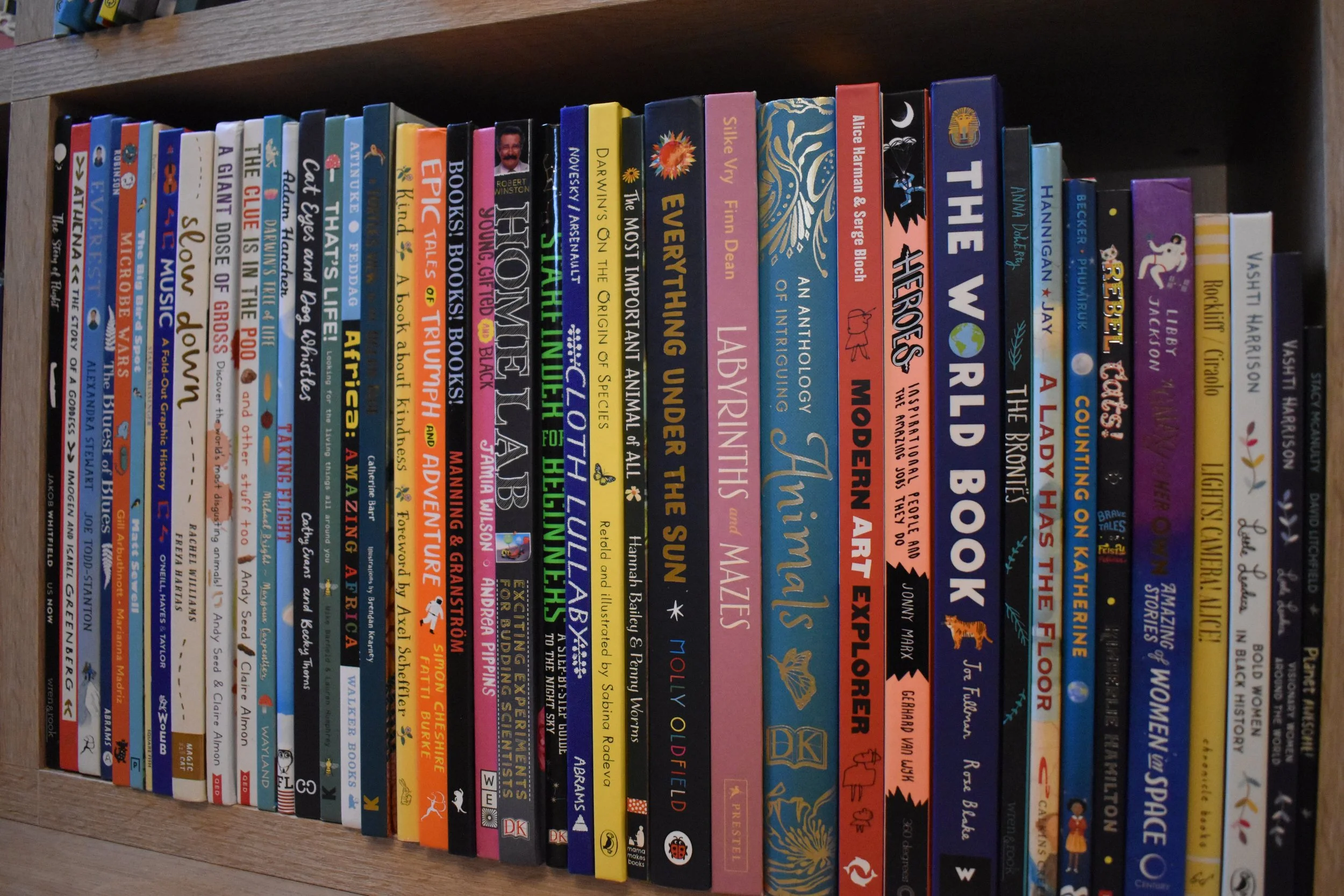
Reviews from Another Life
I have been reviewing books for many years. Here you can search for reviews of other titles by the authors, illustrators, poets and publishers featured on my ‘Reviews’ blog.
Rebel Animals at Risk
Our planet is home to a vast array of fascinating and extraordinary creatures. Sadly, many are on the edge of extinction. ‘Rebel Animals at Risk’ introduces the reader to amazing creatures from every continent and ocean, with each section illustrated by illustrators from around the world in their own unique style.
The book tells the stories of over 60 real-life creatures. A map at the start of each section helps the reader to locate where each comes from and a fascinating introduction to that area, the creatures that live there and the challenges that they are facing. A wonderful range of creatures is included, both well-known and lesser- known. The ‘wildlife wins’ for each region are also listed, celebrating the successes and offering an encouraging, positive note.
There are so many fascinating tales here such as that of mischievous Veeti, the European mink who lives at Ranua Wildlife Park in Finland or Whiskey, the Numbat who was born at Perth Zoo. Both these creatures are playing an important role in the conservation of their species as well as raising awareness. Each story could lead to further research about that particular creature or that breed. The book contains suggestions for further reading or film to watch as well as ideas for how to take action to make life better for endangered animals.
A clear contents, comprehensive index and glossary make the book perfect for research, allowing the reader to readily locate information. There are also sections about the author and each illustrator. Packed with information about conservation and entries on individual creatures, ‘Rebel Animals at Risk’ would make an excellent addition to any classroom or library!
Rebel Animals at Risk
Kimberlie Hamilton , with illustrators from around the world
Scholastic ISBN: 978-0702300110
Lesser Spotted Animals
‘Lesser Spotted Animals’ speaks out for the overlooked, almost forgotten and practically unknown creatures of the animal world. Big or small, cute or quirky, endangered or numerous-the one thing that these animals have in common is that they are most definitely Z-list. Unlike the A-List celebrities of the natural world, these creatures have never had their moment in the lime light- that is, until now…
So, say goodbye to the gnu, cheerio to the cheetah and poo poo to the panda. There will be no lions and tigers and bears (oh my!) but rather pikas and numbats and yellow-footed rock wallabies. Prepare to meet the wonderfully wow wildlife you never normally get to see.
Each page of this book celebrates a different mammal, one of the thousands that never gets seen and never get talked about. Some of the animals within the book are plentiful. Take Africa’s pongy predator, the zorilla, for example. This carnivorous weasel-like creature may look a little like a skunk, but when it comes to pong-power, it knocks the more commonly known skunk out of the water. The zorillas’ potent stench can be smelt more than a mile away. Despite this, Kenyan farmers are eager to have zorillas around as they eat the grubs, rats and mice that ruin pastures and wreak havoc on their crops. There is also the dagger-toothed flower bat, the friendly fruit champion of the night. Although its name suggests otherwise, these are gentle creatures with a sweet-tooth. They flit from flower to flower sipping at the nectar. At the same time, they spread the pollen that has stuck to their faces, pollinating the trees. In fact, without these peaceful pollinators, some fruit trees would be entirely fruitless!
However, many of these Lesser Spotted Animals are far from numerous, with many being critically endangered or having so little known about them that it is impossible to say whether or not they are at risk. The rocky rabbit relative, the ili pika, was first discovered in 1983 and since then its numbers have halved, making it endangered. Unlike its rabbit cousins, the ili pika has small rounded ears and shorter legs; it also has a voice, making short eep, eep, eep noises. They are just as cute as their rabbit relations though and have some seriously clever survival skills to help cope the long, cold, snowy winters. The numbat – toothy termite-eater of the Australian west – can scoff as many as 20,000 termites each day, licking them up with its long, sticky tongue. There are only about 1000 of these unique creatures left in the wild and their numbers continue to drop. Unbelievably, there are more giant pandas in the world than there are numbats, but, unlike those big black-and-white celebrities, they get little to no attention.
‘Lesser Spotted Animals’ is an absolutely fascinating and eye-opening look at the natural world, delivering a powerful message, especially when sharing those animals that are endangered but whose plight (and existence) is virtually unknown to most of us. However, the book does not preach or lecture. In fact, its accessible chatty style, fact boxes and humour make it a light, easy read which would appeal to most children as it manages to be factual, engaging and funny all at once. The text is a perfect mix of scientific terminology and facts with description and anecdotes that will allow children to visualise the animals. For example, the size of each animal is described in ways such as, ‘as long as two average twelve year-olds, end-to-end,’ and, ‘about as big as a mouse – with wings.’ Alongside this are Martin Brown’s brilliant illustrations. Every page is full colour with delightful cartoon character animals, many of which have fun speech bubbles, which will have you chuckling to yourself. As well as the large illustrations, there are plentiful additional smaller pictures which will raise a smile: the sand cat in an ‘I heart sand’ t-shirt; the dagger-toothed flower bat dressed as batman; the tap-dancing black-footed ferret.
This gem of a book will hook children into learning more about lesser known animals. They can discover some of the 5,500 species of mammal out there in the world such as the dik dik, dingiso and delicate deer mouse (that just sneak on to the final page of the book). Perhaps, this could lead toward them creating their own book of ‘Lesser Spotted animals,’ (or a version about birds, marine life, insects, reptiles…). The small maps and geographical information on each page encourage a more detailed look at animal habitats and how different creatures survive in more extreme environments. This is also an excellent springboard for looking at classification and species diversity. Part of the detailed glossary is the different statuses used to classify animals, from least concern to extinct. Children could learn about the reasons behind why different creatures, through history to the present day, have become endangered and even extinct, as well as the different ways they are being protected. They could use persuasive writing and advertising to create their own campaign to help raise awareness about a ‘Lesser Spotted’ animal (just like the campaigns that have been used to rally support for the ‘celebrity’ pandas, elephants and koalas). Such work, with older children, would also help them to consider the part that media exposure contributes to fame – why have some of these animals become such celebrities of the natural world, and others not. Why do we care so much about them?
Lesser Spotted Animals – The Brilliant Beasts You Never Knew You Needed To Know About
Martin Brown
David Fickling Books ISBN: 978-1910200537
Martin has written a second book called ‘Even More Lesser Spotted Animals’, also published by David Fickling Books (ISBN: 978-1338349610). Some guided reading notes for the first book are available in Reading Resources.
Crazy About Cats
Although I am a fan of photographs in non-fiction books, there is something very appealing about Owen’s stunning illustrations and their beauty which negates this concern completely. ‘Crazy About Cats’ begins with exploring the genus of cats, number of species and general diet and habitat of these amazing creatures before considering their evolution and the domesticity of the house cat. This could form the perfect starting point for work on classification, using examples before working scientifically and classifying creatures they might find closer to home. (Bonkers About Beetles might come in handy here!)
The diversity of cats in this book is wonderful, making the perfect starting point for further investigation, allowing children to compare and contrast how different cats species have adapted to their environments. The marbled cat (Pardofelis marmorata) caught my imagination - I’m ashamed to say I had never heard of it; I now know where it comes from and that it is the only species classified as ‘pardofelis’, having previously been thought to belong to the panthera lineage. Another species which leapt off the page at me was the ‘margay’. Sadly. both of these wonderful creatures are considered to be ‘near threatened’.
‘Crazy About Cats’ is packed full of fascinating, clear information, but I also love the fact that there is a section about cat mythology, touching on some of the stories told about cats through the ages. There are many writing opportunities which might come from this book as well- reports, persuasive, discussion as well as narrative.
The contents and index make it easy to navigate, but this is really one of those books that is best lingered over as something catches the eye. The book ends with information about the endangered status of many of our big cats and suggestions for how we can help.
Beautiful in content as well as quality, ‘Crazy About Cats’ is a fabulous book about felines which will captive and educate in equal measure.
Crazy About Cats Owen Davey
Flying Eye Books ISBN: 978-1911171164
Obsessive About Octopuses
The latest in Owen Davey’s ‘About…’ series is every bit as delightful as the others. Each book looks in detail at one special creature and entices the reader in with its beautiful illustrations and fascinating facts. This series has proved very popular in our school library, with ‘Mad About Monkeys’ top of the list. I am sure this latest offering will be just as admired.
Colour is used to great advantage throughout the book, adding to the appeal. Octopuses tentacles wind their way across the pages, framing and bordering the text. There are plenty of side headings with little snippets of information on offer, making it easy to dip in and out of.
The text is packed with information, offering lots of details and facts. There are so many gems included here, all clearly explained, using scientific language where needed, making the book an absorbing read. The index gives the Latin names as well as the English, useful for Year 6 work on Linnaeus and his system of binomial nomenclature, as well as for locating information easily. The contents offers broader sections to entice the browser. My favourite section is the one on ‘Octopus Mythology’, which explores legends about these incredible creatures from different cultures.
A wonderfully tactile and beautifully illustrated book, ‘Obsessive About Octopuses’ is an excellent read. Another to add to the library.
Obsessive About Octopuses Owen Davey
Flying Eye Books ISBN: 978-1912497195


